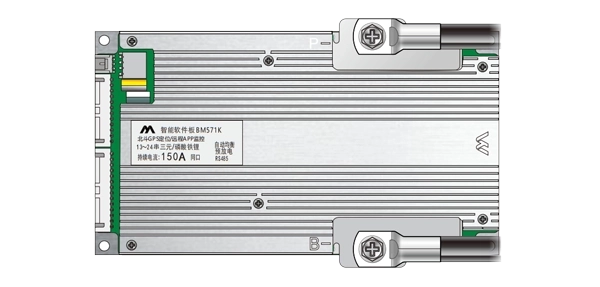A modular BMS is an indispensable component for any scalable and high-performance battery system.
Learn more
As energy systems become more intelligent, decentralized, and user-controlled, the demand for smarter battery monitoring solutions is at an all-time high. Whether you're using lithium-ion batteries in electric bikes, solar power stations, marine systems, or RVs, visibility and control over your battery's health are non-negotiable. Enter the bluetooth BMS—a compact yet powerful battery management system that integrates wireless communication for real-time monitoring, control, and diagnostics. Unlike traditional battery management systems that require wired displays or diagnostic cables, a bluetooth BMS allows users to connect wirelessly via smartphone or tablet. This enables seamless access to vital battery information such as voltage, temperature, current, state of charge, and cell balancing status—without opening the battery enclosure or connecting a PC. In this article, Mingtang will explore the core benefits of bluetooth BMS.

A bluetooth BMS, or Bluetooth-enabled Battery Management System, is a digitally intelligent controller installed in lithium battery packs to ensure safety, performance, and efficient operation. It performs traditional BMS functions—such as overcharge protection, over-discharge protection, thermal regulation, and cell balancing—while also allowing wireless access to all battery parameters via Bluetooth Low Energy (BLE) technology. The Bluetooth communication module within the BMS continuously transmits real-time data to a mobile device, enabling users to monitor their battery status on the go. With the help of an app, the bluetooth BMS user can view per-cell voltages, battery temperature, charge/discharge current, and even log historical data over time for performance analysis.
Traditionally, battery diagnostics required manual voltage measurements, physical access to the battery terminals, or the use of external screens or programming tools. With a bluetooth BMS, this entire process is revolutionized. Users can instantly view live system data from a mobile device, even if the battery is installed in a sealed enclosure, vehicle chassis, or wall-mounted cabinet. This is invaluable in applications like electric bikes, energy storage cabinets, and marine systems where opening up the battery compartment may be time-consuming, impractical, or even unsafe. By using a bluetooth BMS, diagnostics become safer, faster, and more user-friendly.
A bluetooth BMS doesn't just show you what's happening—it proactively monitors and sends real-time alerts when something goes wrong. For example, if a single cell in the battery drops below a safe voltage threshold, the app may immediately highlight the issue with a warning signal. Similarly, if temperatures exceed predefined safety limits, the system can notify the user and take automatic action. Fault codes and alarms are logged and categorized—low voltage, overcurrent, internal short, over-temperature, and even communication errors are captured for later review. This empowers technicians and end-users to act before failures escalate, ensuring safe and stable long-term system operation.
One of the strongest advantages of a bluetooth BMS lies in its customizability through mobile apps. Instead of relying on factory-fixed parameters, users can often configure settings to suit their specific battery use case. Examples include adjusting the cell balancing trigger voltage, redefining overcurrent shutdown thresholds, setting upper/lower temperature limits, and even changing cell count settings. In professional installations, this flexibility reduces the need for multiple BMS variants. A technician can use one universal bluetooth BMS model and configure it for different pack voltages or usage profiles using only a mobile app. This lowers inventory complexity and enables faster commissioning.
By empowering end users to understand and control their battery status, a bluetooth BMS enhances the user experience dramatically. Customers feel more confident when they can open an app and instantly check SOC, temperature, and health metrics. For manufacturers, this visibility reduces customer complaints and warranty claims. Support teams also benefit from remote fault logs, which allow them to diagnose issues without physically accessing the battery. In B2B settings, this saves time, reduces site visits, and shortens service lead times—directly impacting operating costs.
The bluetooth BMS is more than a convenience—it's an essential component for any modern lithium battery system that values safety, efficiency, and user control. By combining real-time monitoring, wireless control, and intelligent diagnostics, bluetooth BMS technology empowers users to take full command of their energy storage—no matter the application. From electric mobility and RV systems to solar banks and consumer power products, the bluetooth BMS delivers an unmatched blend of technical performance and user experience. If you're designing, building, or upgrading a lithium battery-powered solution, choosing a high-quality bluetooth BMS will ensure safer operation, longer battery life, and smarter energy decisions.